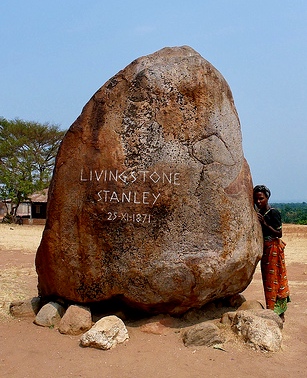NOTE: This debut novel by Gael Faye was WINNER of the Prix Goncourt des Lyceens for 2016, one of France’s highest literary awards.
“I am haunted by the idea of returning. Not a day goes by without the country calling to me. A secret sound, a scent on the breeze, a gesture, sometimes silence is enough to stir my childhood memories. ‘You won’t find anything there, apart from ghosts and a pile of ruins,’ Ana keeps telling me… I listen and I believe her….So I put it out of my mind. I decide, once and for all, that I’m never going back. My life is here. In France.”
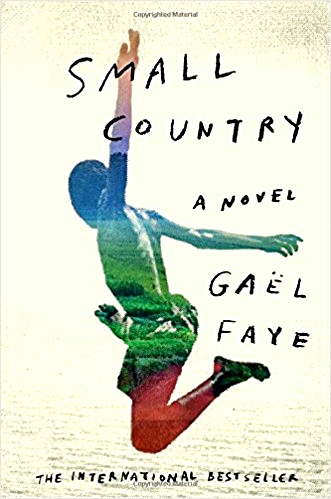
Set in Burundi from 1992 – 1995, in the lead-up to that nation’s genocidal civil war, Small Country, for all its sad events, is far more a story of a child’s coming of age than it is a war story. The Prologue sets the tone, as a father tries to explain to his son the complex cultural differences among the people in his family and throughout the country. The Hutu, he explains, are the biggest of the three groups of residents; the Tutsis, their own family group, are a much smaller group; and the Twa pygmies, a third group, are the smallest number of all. He also explains that these people often have recognizable physical differences in height and facial structure, so their racial connections are sometimes physically obvious – and sometimes not, due to intermarriage. It is far more difficult for Papa to make son Gabriel understand why these groups often do not get along, since they all live in the same country, speak the same language, and have the same God. Making life even more complicated, the country is small and borders are “friendly.” People frequently marry and move into or out of neighboring countries at will.
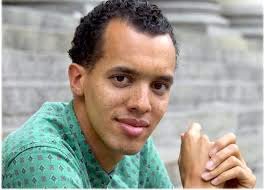 A further introduction, in italics, which the reader comes to identify with the adult Gabriel, comments on life twenty years later, as he muses about wanting to return to his country from Paris, where he has lived since he and his sister were sent into exile as civil war broke out in 1995, when he was thirteen. Though he is fluent in French and lives and works successfully in France, Gaby sees his life as “one long meandering…Nothing ignites my passion. There’s no fire in my belly.” On this day, however, he has received a mysterious phone call which he needs to discuss with his sister Ana, as he believes it to be a sign that he must return to Burundi – “to bring this obsessive story to an end, once and for all…to close the door.”
A further introduction, in italics, which the reader comes to identify with the adult Gabriel, comments on life twenty years later, as he muses about wanting to return to his country from Paris, where he has lived since he and his sister were sent into exile as civil war broke out in 1995, when he was thirteen. Though he is fluent in French and lives and works successfully in France, Gaby sees his life as “one long meandering…Nothing ignites my passion. There’s no fire in my belly.” On this day, however, he has received a mysterious phone call which he needs to discuss with his sister Ana, as he believes it to be a sign that he must return to Burundi – “to bring this obsessive story to an end, once and for all…to close the door.”
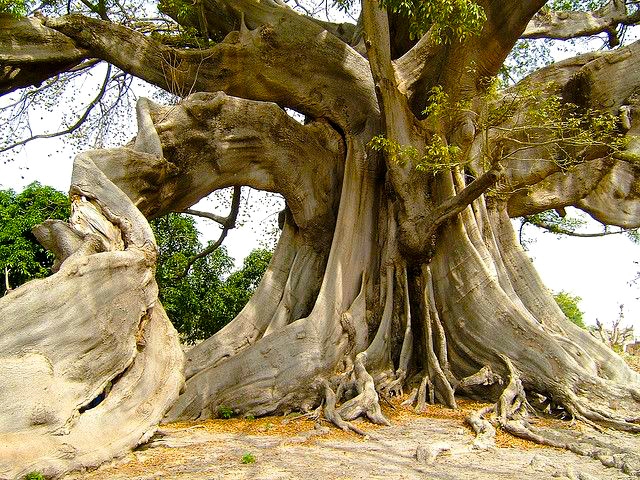
On a trip to Zaire, the family sees an old kapok tree, which leads the father to talk about the business of kapok. The tree here is 800 years old.
The information in the two preceding paragraphs all appears in the first six pages of this remarkably astute and intense novel. Chapter One begins the actual narrative, Gabriel’s story, told in his own words, as a child in Burundi from ages ten to thirteen – a vibrant, positive story of growing up surrounded by friends and family from all ethnic groups during the key years which changed not only his life but the lives of everyone he knew. It is so full of personal detail and comes alive so fully that it is difficult to remember that this is fiction and not a memoir. The confusion is understandable. The author himself lived a life which paralleled Gaby’s in key elements during a happy childhood in Burundi in the years leading up to one of the bloodiest, most violent ethnic wars in history, before his eventual arrival in Paris, a city vastly different from Bujumbura.
A key time in Gaby’s life, though he does not recognize it at the time, begins when he and his family take a trip to visit Jacques, a long-time friend, in Zaire in 1992. Mother and father have not spoken much for the past several weeks, and the border crossing, on its own, is difficult, with unruly crowds and hyperinflation causing unexpected problems. “In Mobutu’s Zaire, hyperinflation meant paying for a glass of water with banknotes of five million zaires.” People carrying wheelbarrows full of cash “pleaded for a few million zaires to help them survive the unfortunate consequences of the fall of the Berlin Wall.” Papa ends up paying the bribes that all the border checks have really been about, arriving, finally, at Jacques’s house. The dinner meal is filled with tension. Jacques himself has been urged by his sister to join her in Belgium, which he has rejected, and he likewise rejects Papa’s suggestion that he come with them and settle in Bujumbura. Maman, who grew up in Rwanda, which is already dealing with a genocidal war between Tutsi and Hutu, likewise rejects his coming to Bujumbura.
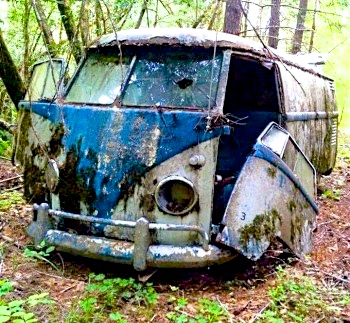
The carcass of a VW Combi in the wasteland is the site of meetings between Gaby and four friends who regularly talk about their lives and their futures.
When his mother leaves home, Gaby lives with the aftereffects, going to school and forming deep friendships with four other boys, sharing their ideas at a club they have established, which meets in the carcass of an abandoned VW Combi in a nearby wasteland. As time passes, he and the four other boys who have been his best friends for years begin to think differently – not about girls and sex – but in terms of politics and the obligations they have regarding the future of their country. A major event, the election of a new president, pits the Hutus against the Tutsis. Gaby and his family are Tutsis, and they are on the winning side, the first time that the Burundian president has not been a member of the military. As Gaby tells his female pen pal in France, “I don’t think this job will be as much of a headache for him as it was for his predecessors….They never knew whether to make peace or wage war.”
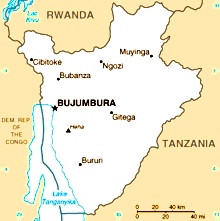
Map of Burundi and its neighbors. Zaire, as the country was known in the early 1990s, is now the Democratic Republic of Congo.
Gradually, reality becomes ever more violent. Hutu extremists are trying to take over, and people fear widespread slaughter. The shooting down of the plane carrying both the president of Burundi and the president of Rwanda, and the blaming of the Tutsis lead to roadblocks, murders of families, and the inability of Tutsis like Gaby and family to leave their homes. Problems come to a head as thousands of people die, and when two of Gaby’s friends call a meeting of their group to discuss a murder, Gaby decides that he no longer has any choice about taking a stand. Twenty years later, he fills in the details of what has happened between 1995, when he left for France, and 2015, when he looks back on his life trying decide whether to return to Burundi in response to the summons he has received in the opening paragraphs.
Beautifully organized and developed; sensitively depicted in terms of the human costs, both physical and psychological; vibrantly alive in its historical setting and atmosphere; enlightening in its insights into the lives the children affected; and grand in its scope and emotional impact, Small Country is now at the top of my Favorites List for the year. It is a gem.
Photos. The author’s photo appears on http://www.lezardes-et-murmures.com
On a trip to Zaire, the family sees an old kapok tree, which leads the father to talk about the business of kapok. The tree here is 800 years old. https://www.pinterest.com
On the same trip to Zaire (now the Democratic Republic of Congo), the family sees the monument to Livingstone and Stanley: http://www.flickriver.com/
Gaby and his friends form a club which meets in the carcass of an old VW Combi in the wasteland on a regular basis. https://www.pinterest.com/
Map of Burundi and is neighbors, including, on the west, the Democratic Republic of Congo, formerly Zaire. http://legacy.lib.utexas.edu
